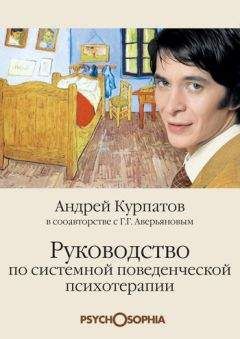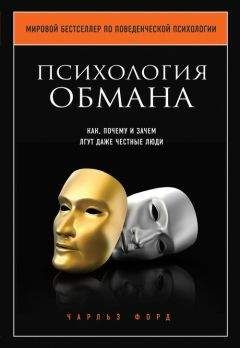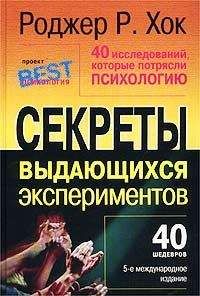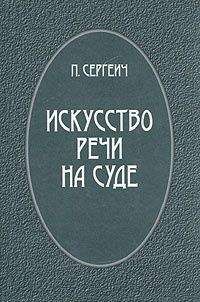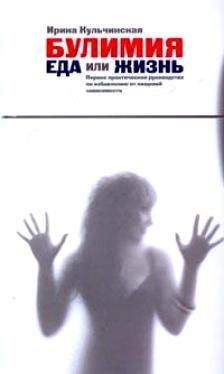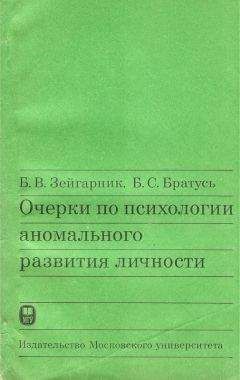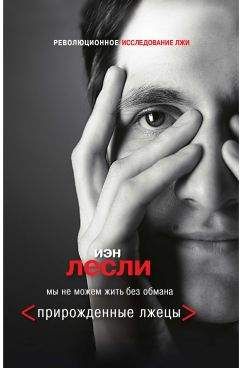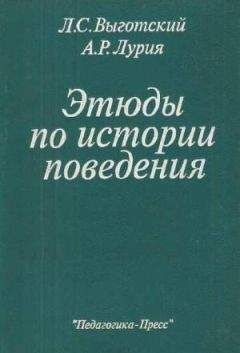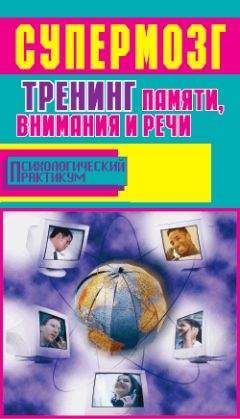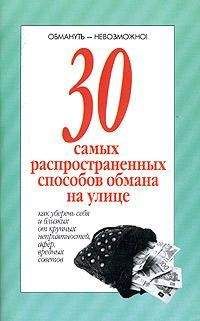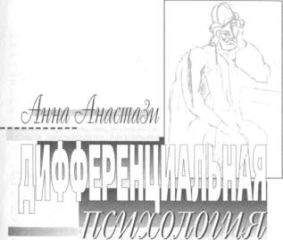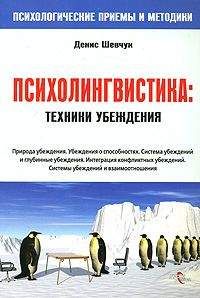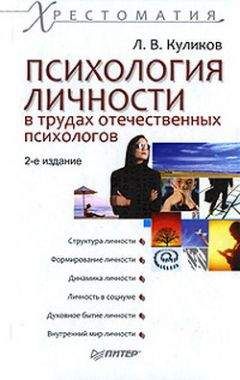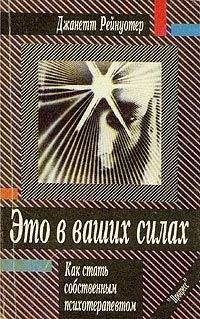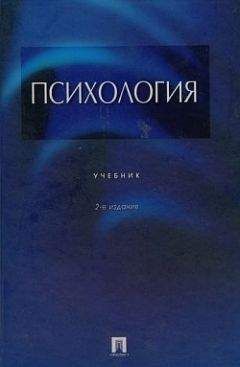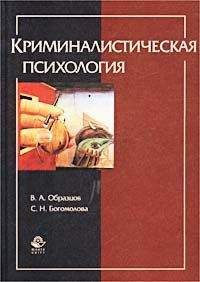Олдерт Фрай - Детекция лжи и обмана
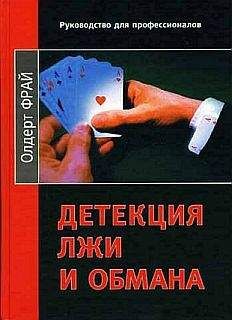
Скачивание начинается... Если скачивание не началось автоматически, пожалуйста нажмите на эту ссылку.
Жалоба
Напишите нам, и мы в срочном порядке примем меры.
Описание книги "Детекция лжи и обмана"
Описание и краткое содержание "Детекция лжи и обмана" читать бесплатно онлайн.
Как распознать ложь и обман в поведении и речи человека? Эти фундаментальные вопросы находят свое решение на страницах предлагаемого руководства. Без сомнения, эта книга — самый важный за последние годы вклад в теорию и практику психологии лжи и обмана. Впервые так полно и ясно представлены исследования психологических и физиологических показателей правдивого и лживого поведения и речи, а также — фактология использования метода детекции лжи и обмана с помощью полиграфа.
Эта книга принесет пользу всем, кто должен знать, говорят ли окружающие правду, и иметь практическое руководство, чтобы обеспечить себе это знание — для социальных и юридических психологов, криминалистов, политических консультантов и адвокатов.
Fiedler, K. & Walka, I. (1993). Training lie detectors to use nonverbal cues instead of global heuristics. Human Communication Research, 20,199–223.
Fisher, R. P. & Geiselman, R. E. (1992). Memory-enhancing techniques for investigative interviewing: the cognitive interview. Springfield, IL: Charles C. Thomas.
Flavell, J. FL, Botkin, P. T, Fry, С. K., Wright,J. С &Jarvis, P. T. (1968). The development of role-taking and communication skills in children. New York: John Wiley.
Foley, M.A. & Johnson, M.K. (1985). Confusions between memories for performed and imagined actions: a developmental comparison. Child Development, 56,1145–1155.
Ford, Ch. V. (1995). Lies! Lies!! Lies.!! The psychology of deceit. Washington, DC: American Psychiatric Press.
Frank, M.G. & Ekman, P. (1991). The ability to detect deceit generalizes across different types of high-stake lies. Journal of Personality and Social Psychology, 12, 1429–1439.
Freedman, J. L. Adam, E. K., Davey, S. A. & Koegl, C.J. (1996). The impact of a statement: more detail does not always help. Legal and Criminological Psychology, 1, 111–130.
Freud, S. (1959). Collected papers. New York: Basic Books.
Fugita, S. S., Wexley, K. N. & Hillery, J. M. (1914). Black-white differences in nonverbal behavior in an interview setting. Journal of Applied Social Psychology, 4,343–351.
Furedy, J.J. (1991a). Alice in Wonderland terminological usage in, and communicational concerns about, that peculiar flight of technological fancy: the CQT polygraph. Integrative Physiological and Behavioral Science, 26, 241–241.
Furedy, J.J. (1991b). On the validity of the polygraph. Integrative Physiological and Behavioral Science, 26, 211–213.
Furedy, J. J. (1993). The «control» question «test» (CQT) polygrapher's dilemma: logico-ethical considerations for psychophysiological practitioners and researchers..International Journal ofPsychophysiology, 15, 263–261.
Furedy, J. J. (1996a). Some elementary distinctions among, and comments concerning, the «control» question «test» (CQT) polygrapher's many problems: a reply to Honts, Kircher and Raskin. International Journal of Psychophysiology, 22, 53–59.
Furedy, J. J. (1996b). The North American polygraph and psychophysiology: disinterested, uninterested, and interested perspectives. International Journal of Psychophysiology, 21, 91-105.
Furedy, J. J. & Heslegrave, R.J. (1988). Validity of the lie detector: a psychophysiological perspective. Criminal Justice and Behavior, 15, 219–246.
Gale, A. (1988). The polygraph test, more than scientific investigation. In A. Gale (Ed.), The polygraph test: lies, truth and science. London: Sage, 1–9.
Garratt, G. A., Baxter, J. C. & Rozelle, R. M. (1981). Training university police in black-American nonverbal behavior.Journal of Social Psychology, 113, 211–229.
Garrido, E., Masip, J., Herrero, C., Tabernero, С & Vega, M.T. (1998). Policemen's ability to discern truth from deception. Unpublished manuscript.
Ginton, A., Daie, N., Elaad, E. & Ben-Shakhar, G. (1982). A method for evaluating the use of the polygraph in a real-life situation. Journal of Applied Psychology, 61,131–131.
Goldman-Eisler, F. (1968). Psycholinguistics: experiments in spontaneous speech. New York: Doubleday.
Goodman, G. S. & Schwartz-Kenney (1992). Why knowing a child's age is not enough: influences of cognitive, social, and emotional factors on children's testimony. In H. Dent & R. Flin (Eds), Children as witnesses. Chichester: John Wiley, 15–32.
Goodman, G. S., Rudy, L., Bottoms, B. & Aman, C. (1990). Children's concerns and memory: issues of ecological validity in the study of children's eyewitness testimony. In R. Fivush & J. Hudson (Eds), Knowing and remembering in young children. New York: Cambridge University Press, 249–284.
Gordon, R.A., Baxter, J.C, Rozelle, R.M., & Druckman, D. (1981). Expectations of honest, evasive and deceptive nonverbal behavior. Journal of Social Psychology, 121,231–233.
Gordon, B. N., Schroeder, С. S. & Abrams, J. M. (1990). Age and social class differences in children's knowledge of sexuality.Journal of Clinical Child Psychology, 19,33–43.
Granhag, P.A. & Stromwall, L.A. (1998). «Let's go over this again»: effects of repeated interrogations on deception detection performance. Paper presented at the Eighth European Conference on Psychology and Law, Cracow, Poland, September 1998.
Greene, J.O., O'Hair, H.D., Cody, MJ. & Yen, С. (1985). Planning and control of behavior during deception. Human Communication Research, 11, 335–364.
Greuel, L. (1992). Police officers' beliefs about cues associated with deception in rape cases. In F. Losel, D. Bender & T Bliesener (Eds), Psychology and law: international perspectives. Berlin: Walter de Gruyter, 234–239.
Gudjonsson, G. H. (1992). The psychology of interrogations, confessions and testimony. Chichester: John Wiley.
Hale, J. L. & Stiff, J. B. (1990). Nonverbal primacy in veracity judgments. Communication Reports, 3, 15–83.
Hall, J. A. (1919). Gender effects in decoding nonverbal cues. Psychological Bulletin, 85,845–851.
Hall, J. A. (1984). Nonverbal sex differences: communication accuracy and expressive style. Baltimore, MD: The Johns Hopkins University Press.
Hemsley, G. D. & Doob, A. N. (1918). The effect of looking behavior on perceptions of a communicator's credibility. Journal of Applied Social Psychology, 8,136–144.
Hernandez-Fernaud, E. & Alonso-Quecuty, M. (1991). The cognitive interview and lie detection: a new magnifying glass for Sherlock Holmes? Applied Cognitive Psychology, 11, 55–68.
Hershkowitz, I., Lamb, M. E., Sternberg, K. J. & Esplin, P.W. (1991). The relationships among interviewer utterance type, CBCA scores and the richness of children's responses.Legal and Criminological Psychology, 2, 169–116.
Hocking, J. E. & Leathers, D. G. (1980). Nonverbal indicators of deception: a new theoretical perspective. Communication Monographs. 41,119–131.
Hrfer, E. & Kohnken, G. (1999) Assessingthe credibility of witness statements. Paper presented at the Ninth European Conference on Psychology and Law, Dublin, Ireland, July 1999.
Hrfer, E., Akehurst, L. & Metzger, G. (1996). Reality monitoring: a chance for further development of CBCA? Paper presented at the Annual Meeting of the European Association on Psychology and Law in Sienna, Italy, August 1996.
Hrfer, E., Kohnken, G., Hanewinkel, R. & Bruhn, C. (1993). Diagnostik and attribution vonglaubwiirdigkeit. Kiel: Final report to the Deutsche Forschungsgemeinschaft, КО 882/4-2 Kiel, Germany: University of Kiel.
Honts, C. R. (1991). The emperor's new clothes: the application of the polygraph tests in the American workplace. Forensic Reports, 4,91-116.
Honts, С. R. (1994). Assessing children's credibility: scientific and legal issues in 1994. North Dakota Law Review, 10, 819–903.
Honts, C. R. (1995). The polygraph in 1995: progress in science and the law.North Dakota Law Review, 11, 981-1020.
Honts, С. R. (1996). Criterion development and validity of the TKB in field application.Journal of General Psychology, 123, 309–324.
Honts, C.R. & Perry, M.V. (1992). Polygraph admissibility: changes and challenges. Law and Human Behavior, 16, 351–319.
Honts, С R. & Raskin, D. С. (1988). A field study of the validity of the directed lie control question. Journal of Police Science and Administration, 16, 56–61.
Honts, С R., Devitt, M. K, Winbush, M. & Kircher J. С. (1996). Mental and physical countermeasures reduce the accuracy of the concealed knowledge test. Psychophysiology, 33,84–92.
Honts, C. R., Modes, R. L. & Raskin, В. С. (1985). Effects of physical counter-measures on the physiological detection of deception. Journal of Applied Psychology, 10,111–181.
Honts, C. R., Kircher, J. C. & Raskin, В. С. (1996). Polygrapher's dilemma or psychologist's: a reply to Furedy's logico-ethical considerations for psychophysiological practitioners and researchers. International Journal of Psychophysiology, 20, 199–201.
Honts, С R., Raskin, В. С & Kircher, J. С. (1981). Effects of physical counter-measures and their electromyographic detection during polygraph tests for deception. Journal of Psychophysiology, 1, 241241.
Honts, C. R., Raskin, В. С & Kircher, J. С. (1994). Mental and physical counter-measures reduce the accuracy of polygraph tests. Journal of Applied Psychology, 19,252–259.
Honts, C.R., Raskin, B.C., Kircher, J. С & Hodes, R. L. (1988). Effects of spontaneous countermeasures on the physiological detection of deception. JoMrrca/ of Police Science and Administration, 16, 9194. л
Horowitz, S. W. (1991). Empirical support for statement validity assessment. Behavioral Assessment, 13, 293–313.
Horowitz, S.W. (1998). Reliability of criteria-based content analysis of child witness statements: response to Tully. Legal and Criminological Psychology, 3, 189–193.
Horowitz,!S. W., Kircher, J. C, Honts, С R. & Raskin, В. С. (1991). The role of comparison questions in physiological detection of deception. Psychophysiology, 34,108–115.
Horowitz, S. W., Lamb, M. E., Esplin, P. W., Boychuk, Т. В., Krispin, O. & Reiter-Lavery, L. (1991). Reliability of criteria-based content analysis of child witness statements.Legal and Criminological Psychology, 2, 11–21.
Horowitz, S, W., Lamb, M. E., Esplin, P. W., Boychuk, Т. В., Reiter-Lavery, L. & Krispin, O. (1996). Establishing ground truth in studies of child sexual abuse. Expert Evidence: The International Digest of Human Behaviour Science and Law, 4,42–52.
Hunter, J. E., Gerbing, B. W. & Boster, F.J. (1982). Machiavellian beliefs and personality: construct invalidity of the Machiavellianism dimension. Journal of Personality and Social Psychology, 43, 12931305.
Hurd, K. & Noller, P. (1988). Becoding deception: a look at the process. Journal of Nonverbal Behavior, 12, 211–233.
lacono, W. G. & Lykken, В. T. (1991). The validity of the lie detector: two surveys of scientific opinion. Journal of Applied Psychology, 82, 426–433.
Ickes, W. (1984). Compositions in black and white: determinants of interaction in interracial dyads. Journal of Personality and Social Psychology, 41, 330–341.
Inbau, E E., Reid,J. E., & Buckley, J. P. (1986). Criminal interrogation and confessions. Baltimore, MB: Williams & Wilkins.
Jackson, J. (1996). Truth or fantasy: the ability of barristers and laypersons to detect deception in children's testimony. Paper presented at the AP-LS Biennial Conference, Hilton Head Island, South Carolina, USA, March 1996.
Jones, В. P. H. & Krugman, R. (1986). Can a three-year-old child bear witness to her sexual assault and attempted murder? Child Abuse and Neglect, 10, 253–258.
Jones, B. P. H. & McGraw, J. M. (1981). Reliable and fictitious accounts of sexual abuse to children.Journal of Interpersonal Violence, 2, 21–45.
Jones, B. P. H. & McQuinston, M. (1989). Interviewing the sexually abused child-London: Gaskell. Johnson, M. K. (1988). Reality monitoring: an experimental phenomenological approach. Journal of Experimental Psychology: General, 111, 390–394.
Johnson, M. & Foley, M. A. (1984). Bifferentiating fact from fantasy: the reliability of children's memory. Journal of Social Issues, 40, 33–50.
Johnson, M. K. & Raye, C. L. (1981). Reality monitoring. Psychological Review, 88, 61–85.
Подписывайтесь на наши страницы в социальных сетях.
Будьте в курсе последних книжных новинок, комментируйте, обсуждайте. Мы ждём Вас!
Похожие книги на "Детекция лжи и обмана"
Книги похожие на "Детекция лжи и обмана" читать онлайн или скачать бесплатно полные версии.
Мы рекомендуем Вам зарегистрироваться либо войти на сайт под своим именем.
Отзывы о "Олдерт Фрай - Детекция лжи и обмана"
Отзывы читателей о книге "Детекция лжи и обмана", комментарии и мнения людей о произведении.





